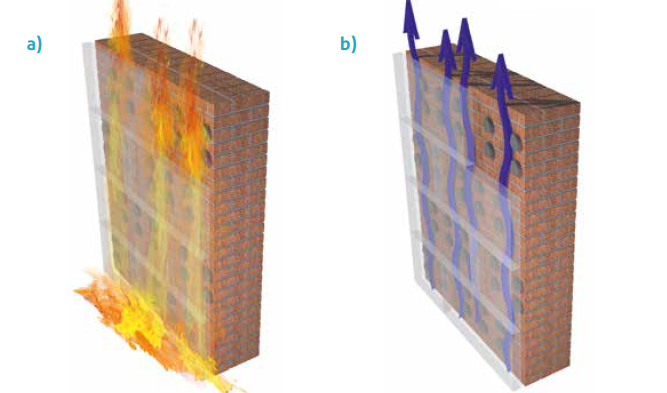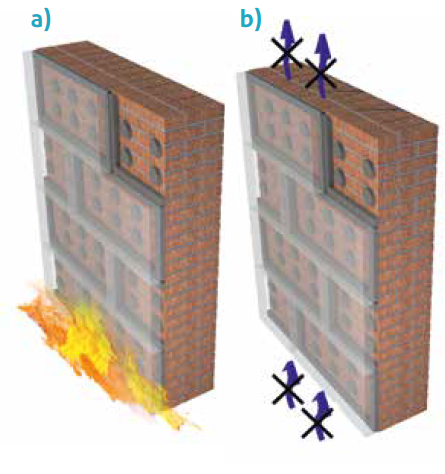- Products
- Systems
- Tools & Services
News
Strip-point or with patches?
Contractors installing the EWI take different approaches in terms of the polystyrene application. For some of them, a peripheral fixing is just a marketing policy, invented rather to increase adhesive sales than to comply with a good building practice. For others, fixing with “patches” ensures proper ventilation between the wall and the insulation layer – a desired phenomenon concerning building partitions. Who should we agree with then?
Before we start, let’s take a quick look at the current guidelines for contractors and two instructions – 418/2007 and 447/2009 issued by Instytut Techniki Budowlanej (Building Technology Institute). The instructions are included in the Technical Approvals for insulation systems and they must be applied during insulation works. There we find the detailed information concerning appropriate way of the polystyrene fixing. Accordingly, there are two recommended methods of the adhesive application:
1. the “strip-point” method
2. the notched method
The first method: the application of the adhesive layer using the “strip-point” method consists in application of at least 3 cm wide strip of mortar along the polystyrene board edges. In addition, one should apply patches of 8 up to 12 cm of diameter on the remaining board surface. It is important to cover with the adhesive at least 40% of the board surface.
The second method: the adhesive should be applied on the entire surface of the insulation board with a notched-trowel (notches approx. 10 x 10 mm). This method can be used on even substrates only.
Why cannot we apply the adhesive with the “patches” only?
REASON 1: FIRE SAFETY
The “strip-point” method guarantees most of all the fire safety. According to the existing building regulations, one of the basic requirements for the buildings is to provide the fire safety .The same requirement is imposed for building products introduced to the market. Furthermore, in accordance to the most common EU regulations on the technical conditions to be met by buildings and their location, the external wall insulation should be made of fire retardant materials. In Poland additionally, the façade top coat and its fixing as well as the external wall thermal insulation used 25 metres from the ground or above must be made of non-combustible materials (may differ locally, check local regulations). “Fire retardant” materials are those which do not spread fire which was ignited whether indoors or outdoors. The material located within the area of ignition source may burn, however the material located beyond that area must not.
One should keep in mind that in the case of the thermal insulation systems, the “fire retardant” condition must be met by the entire arrangement of the wall with insulation. Here, it is worth to emphasize that both proper materials fixing and products themselves are of great importance. This means that the correct and acceptable method is the “strip-point” method only. Why?
In case of fixing with patches, there forms a layer of air void between the substrate (wall) and the polystyrene boards. In the event of fire a chimney draft may arise due to the difference of densities between the cold air outside and the hot air coming from the burning polystyrene. We should remember that polystyrene is a fire retardant, self-extinguishing material – but still it is combustible. Therefore, the fire leads to negative pressure formation which in turn triggers off the process of sucking the flames through the air void layer. To simplify – even if the source of fire is located on the ground floor, yet the entire façade can burn and the fire can even reach up to the attic. When fixing the polystyrene with the “strip-point” method one prevents the formation of such voids and ensures that each polystyrene board has individual encased non-ventilated air layer. The chimney drafts do not form in this case, thus the possibility of the fire spreading between the floors is significantly limited.
REASON 2: VENTILATED SPACE AND AIR VOIDS
Sometimes, it happens that the design includes the execution of a wall containing ventilated or non-ventilated air voids.

In the first case, the ventilated air void is very important in terms of the moisture removal. It is crucial that such layer is always located behind the thermal insulation (when one looks at the partition from the indoors). If the same layer was placed between the structural part of the wall and the thermal insulation, then the insulating material would not fulfill its task as the wall would still be cooled with the air from the outdoors. The same principle applies to designing the flat roofs with ventilation. Thus, when one fixes the boards using the patches only, it results in the formation of the ventilated air layer between the structural part of the wall and the layer of the thermal insulation. This in turn dramatically deteriorates the wall insulation performance and increases the thermal conductivity coefficient, which result in the significant heat loss through this partition.
According to the standard EN ISO 6946 “Building components and building elements. Thermal resistance and thermal transmittance – Calculation method standard“, which specifies the methodology for calculating the thermal conductivity coefficient, one must exclude from the calculations the influence of the layers of materials placed behind the air void. Thus, the heat loss would be the same both when applying the 30 cm thick layer of polystyrene and when applying no polystyrene at all.
In such situation, the investor loses funds as the money spent on the installation of the insulation is simply thrown down the drain. The only objective achieved is the improvement of the building aesthetics; the energy saving is definitely not the case here.
The second case is a wall containing the non-ventilated air void. It is widely known that air is a good insulator and vacuum – even a better one (hence it is used in windows pane kits windows or in a thermos). Its thermal insulation properties depend mainly on the possibility of its movement (convection) and therefore also on the layer thickness. In case of ATLAS EWI systems, the space between the substrate (wall) and the insulation material is not taken into account while designing, because far more important is to provide the appropriate fixing area. The aim is to ensure that the adhesive layer is not too thick (max. 10 mm) and the fixing area is as large as possible. In case of even walls one can easily fix the boards with the notched method. It provides almost complete filling of the space between the wall and the insulation material.
REASON 3: LEGAL CONSEQUENCES

One could ask whether there are any legal consequences when the thermal insulation layer is not fixed using a “strip-point” method. The answer to this question is: YES. In many EU countries a local building supervisor or a representative of the local assessment body (e.g. BBA, NSAI) may then suspend works on site, call for changes or inform the certificate holder. In consequence, the improperly fixed insulation must be dismantled and the work must be performed again – this time according to the manufacturer’s technology. A similar situation may arise also even when the errors are detected during the building maintenance. Here the decision results from the fact that the building does not fulfill at least one basic requirement, i.e. the fire safety specified in local building regulations (in Poland in Construction Law [Art. 5 item 1]).
The “strip-point” method must not be treated as the good building practice – it is the contractor’s duty when fixing the thermal insulation. One should remember that fixing the insulation with patches leads not only to the thermal properties deterioration, but, most of all, negatively influences the safe maintenance of the building.
Original text: Tomasz Rusek, ATLAS Group
English text: Piotr Marciniak, ATLAS Group











